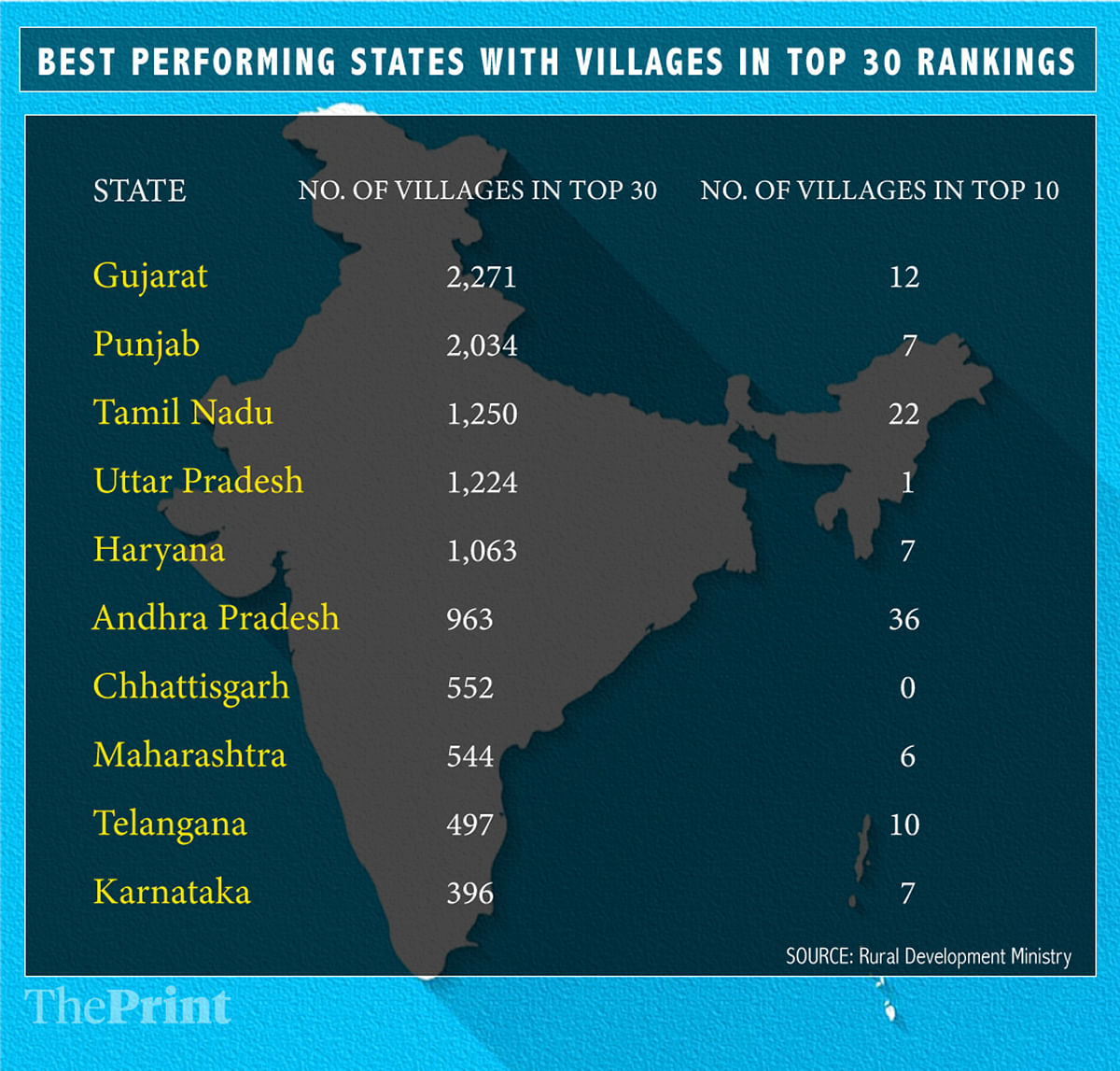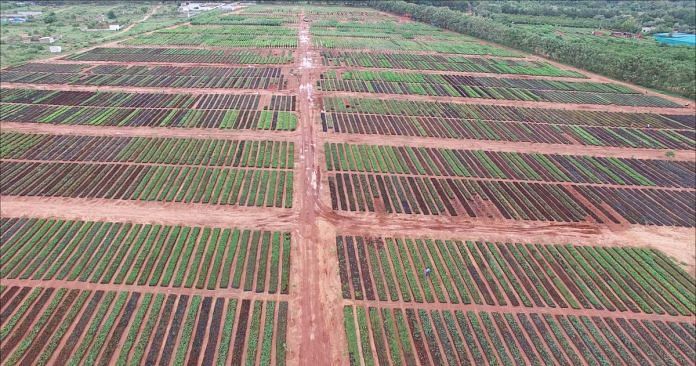Rural Development Ministry’s rankings show Punjab is second to Gujarat in the number of villages in the top 30, while Andhra has the most in top 10.
New Delhi: Tellapur gram panchayat in the Sangareddy district of Telangana is the best village in the country, but there’s also plenty of reason to celebrate for Prime Minister Narendra Modi’s home state of Gujarat.
The Ministry of Rural Development has compiled data and rankings for around 1.22 lakh gram panchayats under Mission Antyodaya, and Gujarat has placed the maximum number of villages in the top 30 rankings.
Due to tied scores, about 12,200 villages are ranked in the top 30, of which Gujarat contributes 2,271.
Also read: Rural minority communities are getting fewer houses under Modi’s pet welfare scheme
Punjab, too, has contributed more than 2,000 villages to the top 30, while Tamil Nadu and Uttar Pradesh are virtually neck-and-neck — with 1,250 and 1,224 respectively. Haryana also does well, with 1,063 villages in the top 30.
Andhra Pradesh, meanwhile, contributes 963 gram panchayats, including the second-best village in India — Parapatla in Chittoor district. Three villages are ranked third — one each from Uttarakhand, Gujarat and Andhra Pradesh.

There are around 128 villages in the top 10, of which Andhra is home to 36, followed by Tamil Nadu (22), Gujarat (12) and Telangana (10).
The ministry clarified that the ranking is provisional and based on the data uploaded so far, which is from 2017 and 2018. This means as more data becomes available, the rankings could change.

As chief minister of Gujarat, Modi had made development of the state his key pitch, even fighting the 2014 Lok Sabha polls as the face of ‘vikas’. Since coming to power, his administration has tried to position itself as a pro-rural, welfare-oriented government.
Parameters and criteria
The villages are first scored on a set of defined criteria, following which the ranks are drawn up. The parameters include:
- Health and sanitation: Whether the village is open defecation-free, if there is a community waste disposal system etc.
- Agriculture, allied and livelihood: To assess availability of government seed centres, availability of markets.
- Housing: Percentage of households with kutcha walls and roof.
- Land improvement
- Animal husbandry
- Drinking water: Determining availability of piped water.
- Roads: Connectivity to all-weather roads, availability of public transport.
- Rural electrification: Percentage of houses that have electricity connection for domestic use.
- Availability of non-conventional energy
- Effectiveness of poverty alleviation programmes like determining percentage of households mobilised into self-help groups.
The purpose of the exercise is to identify gaps in villages based on the set parameters to ensure targeted development and execution of schemes.
Also read: Huge drop in rural women getting houses under Modi’s pet scheme, govt says few women left
Poll-bound states
Of the five states going to polls at the end of this year — Madhya Pradesh, Rajasthan, Chhattisgarh, Telangana and Mizoram — only two find their villages among the top 10. Ten villages from Telangana and six from Madhya Pradesh feature towards the top of the list.
While the BJP rules Rajasthan, Madhya Pradesh and Chhattisgarh, the Congress rules Mizoram and the Telangana Rashtra Samithi heads the inaugural government in India’s newest state.







The chart should also show the TOTAL number of villages in each state, so we would know what PERCENTAGE of a state’s rural areas are in a good shape. For example, Uttar Pradesh ranks quite high up in this chart, but the percentage of its villages that are in top 30 may not be as impressive. More than impressing anyone, it will be a good guiding factor for the state administration itself.
What about the other states ? Nil ?